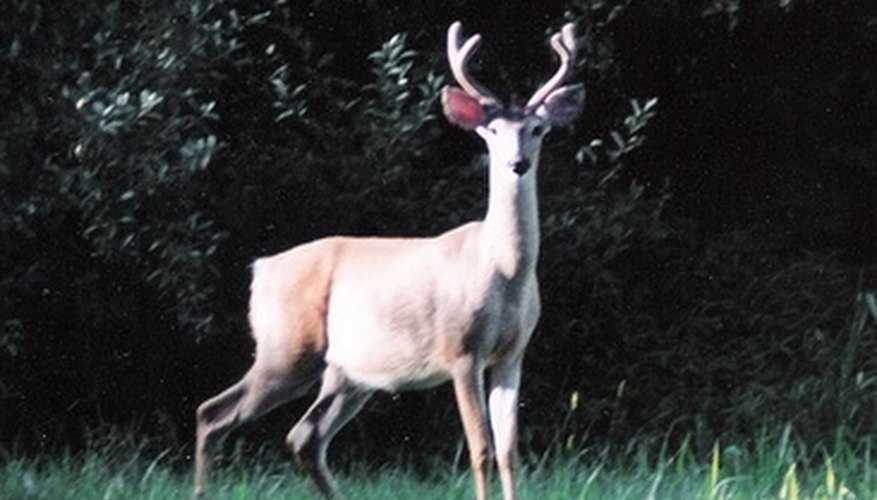
There are a number of reasons for the live trapping of deer. Live trapping allows a hunting enthusiast to enjoy the thrill of deer hunting in a humane way. Live trapping is a common residential practice for property owners who want to thin the population of deer on their property by transporting them elsewhere. Biologists and other scientific researchers also need to trap deer live in order to let them go and observe their habits naturally. Live deer trapping can be accomplished with rudimentary hunting techniques that require minimal equipment.
Local Regulations
Contact the municipality that granted you your hunting license and inquire about materials that can be used to hunt or trap deer. Even with a hunting license, certain materials are still considered contraband while hunting, and some licenses completely forbid the trapping of deer. Make sure you are in accordance with local hunting regulations before attempting to make your live deer trap. If your goal is to rid your property of deer overpopulation, you may be better served contacting your local animal control official.
Snare
Build a snare device out of aircraft cable fitted with a self-locking device. The goal of a deer snare is to hang the snare so that a deer’s head can easily pass through the opening. As they lunge forward, the self-locking device closes over the cable, tightening the loop around the deer’s neck. Use aircraft cable with a thickness close to 3/32-inch, which is enough to restrain the deer without causing excessive harm.
A rudimentary snare can be constructed by allowing the cable to hang from a branch so that the bottom loop rests about three or four feet off the ground. Thread the self-locking device over the aircraft cable to create a loop about 2 feet in diameter in order to accommodate the deer’s entire head. As the deer lunges forward, the snare will tighten around its neck.
Run the aircraft cable to a branch or tree thick enough to resist breaking under the force of a deer. If necessary, attach the cable to a tree trunk and run it along a branch to a support so that it can hang free of the tree. A simple support can be created by tying a small string of cable around the cable and branch to secure it.
Set up a small brush fence around your snare for camouflage. Set bushes within a few feet of the snare, keeping them far enough away so that there is no direct contact with the snare. Do not worry about digging holes for bushes unless it’s necessary to secure them upright.
Net
Set up a large net to block a deer trail as a net trap. Use a piece of rope netting that is at least 6 feet long by 4 feet wide. Use rope that is darker in color to blend in better with its outdoor surroundings.
Set up the net so that the 6-foot length is running vertically. Secure the net by tying the top corners to branches. Do not secure the net so tightly so that it stays on the branch; you want the net to come off and cover the deer running through it. Let the net sit overnight and make sure to inspect your trap every day.


